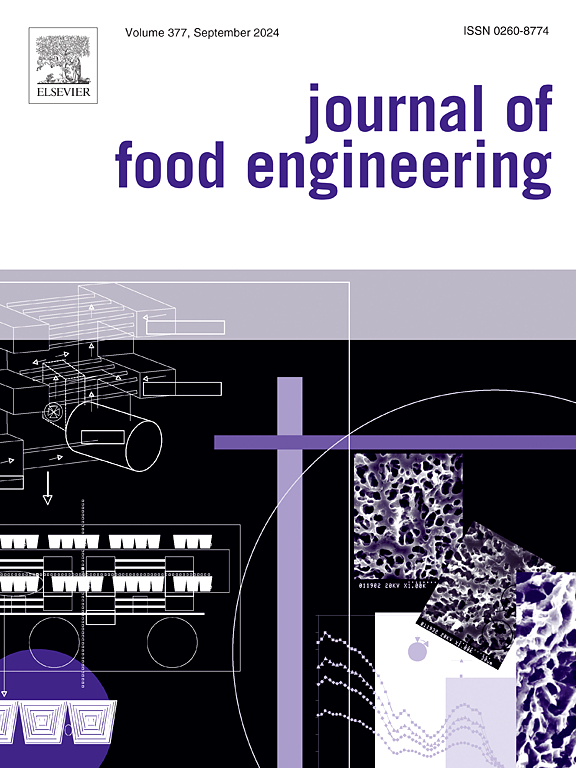Assessing apple bruise susceptibility using the discrete element method
IF 5.3
2区 农林科学
Q1 ENGINEERING, CHEMICAL
引用次数: 0
Abstract
Predicting apple bruise susceptibility is essential for minimising potential damage during postharvest handling. To assess the resistance of apples to mechanical damage, an apple discrete element model was developed at a tissue scale using the particle-filling modelling method. Quasistatic compression experiments, which were designed via the Box–Behnken design, helped determine the optimal simulation parameters. The model accuracy was confirmed by comparing the simulations with the physical tests, which revealed average relative errors of 3.52% for the yield point and 8.55% for the yield force. Subsequently, a dynamic collision test simulation model was established with the linear parallel bond model employed to represent internal particle interactions within the impactor, and a viscoelastic–plastic contact model was integrated to constrain the impactor's motion and limit the force range during loading. The dynamic collisions were simulated at different impactor velocities, and a novel method for calculating the damage volume and damage depth after impact by extracting the crack coordinates was proposed. The resulting damage volume and depth were validated using X-ray computed tomography scans. Finally, the apple's bruise resistance index (BRI) was calculated using data from the simulations, yielding a relative error of 3.27% for the BRI thresholds. Compared with physical tests, calculating the BRI through simulations can be expected to reduce the consumption of experimental materials and time.
用离散元法评价苹果碰伤敏感性
预测苹果伤的易感性对于最大限度地减少采后处理过程中的潜在损害至关重要。为了评估苹果对机械损伤的抵抗力,采用颗粒填充建模方法在组织尺度上建立了苹果离散元模型。通过Box-Behnken设计设计的准静态压缩实验有助于确定最佳模拟参数。仿真结果表明,屈服点和屈服力的平均相对误差分别为3.52%和8.55%,验证了模型的准确性。随后,建立了动态碰撞试验仿真模型,采用线性平行键模型表示冲击器内部颗粒相互作用,并结合粘弹塑性接触模型约束冲击器运动,限制加载过程中的受力范围。模拟了不同冲击速度下的动态碰撞,提出了一种通过提取裂纹坐标计算碰撞后损伤体积和损伤深度的新方法。通过x射线计算机断层扫描验证了损伤的体积和深度。最后,利用模拟数据计算苹果的抗瘀伤指数(BRI), BRI阈值的相对误差为3.27%。与物理测试相比,通过模拟计算BRI可以减少实验材料和时间的消耗。
本文章由计算机程序翻译,如有差异,请以英文原文为准。
求助全文
约1分钟内获得全文
求助全文
来源期刊

Journal of Food Engineering
工程技术-工程:化工
CiteScore
11.80
自引率
5.50%
发文量
275
审稿时长
24 days
期刊介绍:
The journal publishes original research and review papers on any subject at the interface between food and engineering, particularly those of relevance to industry, including:
Engineering properties of foods, food physics and physical chemistry; processing, measurement, control, packaging, storage and distribution; engineering aspects of the design and production of novel foods and of food service and catering; design and operation of food processes, plant and equipment; economics of food engineering, including the economics of alternative processes.
Accounts of food engineering achievements are of particular value.
 求助内容:
求助内容: 应助结果提醒方式:
应助结果提醒方式:


